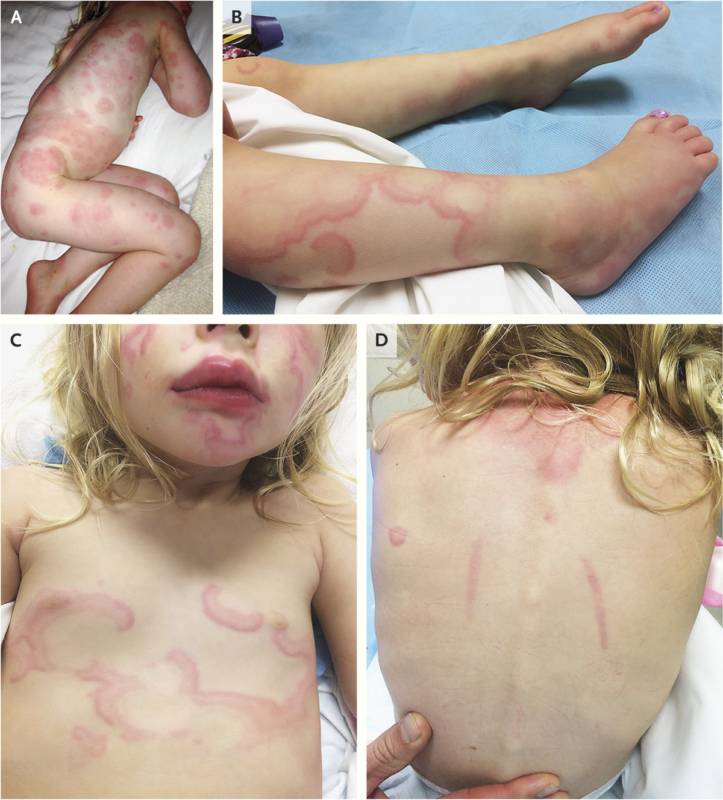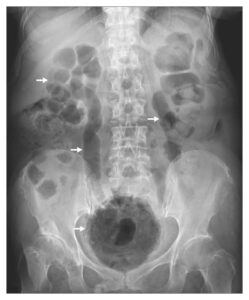This article is an answer to the Case – 3-year-old Girl with Pruritic Blanching Rash
A 3-year-old girl presented to the emergency department on day 1 of a mild pruritic urticarial rash. There was no history of exposure to medications or allergens and no history of similar symptoms. The parents described a viral respiratory illness that had occurred 1 week earlier.
Fever (38.8°C) developed on day 2, when the child was at home, as did a generalized polycyclic annular rash with wheals and ecchymotic centers (Panel A).
On day 3, the child returned to the emergency department with a persistent low-grade fever and swelling of the hands, feet, and face. Physical examination was notable for acral edema and a blanching arcuate urticarial rash (Panels B and C, respectively). Dermographism was elicited by pressure from a pen (Panel D). There was no mucosal involvement.
Complete blood count, urinalysis, and serum chemical analysis were unremarkable. A diagnosis of urticaria multiforme was made, and the child was treated with diphenhydramine. The rash resolved on day 6 with no further sequelae.
Because of the annular nature of the rash, a frequently antecedent infection, and its often dramatic presentation, the condition is commonly misdiagnosed as erythema multiforme or other more serious cutaneous conditions.


